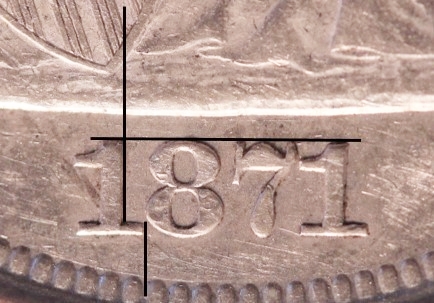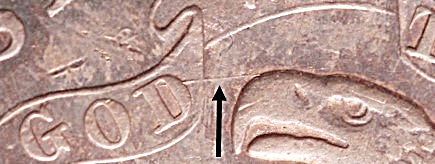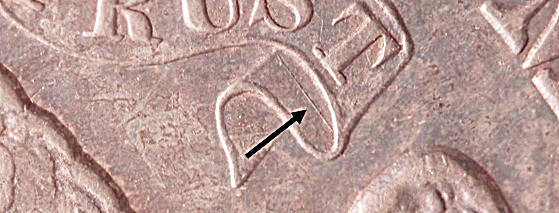|
|
Comments: This is the only use of Obverse 7 and the fourth and final use of Reverse B. |
Obverse 7 The photo below shows the Obverse 7 attribution grid.  1871 Obverse 7 attribution grid The obverse 7 die is doubled. The doubling is most pronounced on the left ends of the horizontal shield lines, pictured below. We’ve included this variety as one of our Top-30.  1871 Obverse 7 die doubling
|
1871 Reverse B features two notable die lines, pictured in the next two photos, that allow quick identification of mid- to high-grade examples. Note that these die lines are much weaker on state c of the reverse due to die polish.  1871 Reverse B die line near eagle's beak  1871 Reverse B die line in fold under TRUST
|
| Photo credits:
Obverse 6: 1871 NGC AU55, from the Osburn-Cushing reference collection. Reverse B: 1871 NGC AU55, from the Osburn-Cushing reference collection. |
